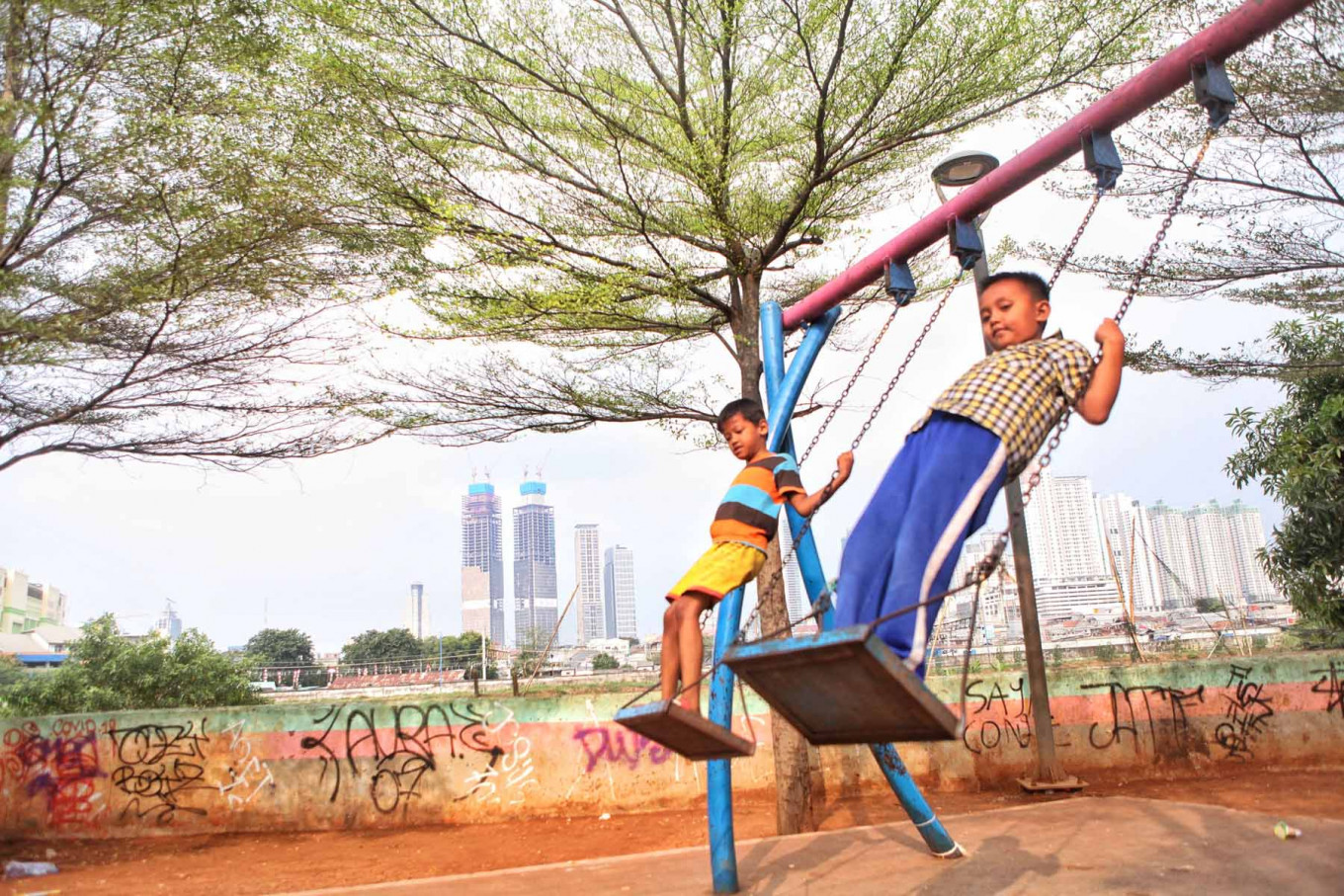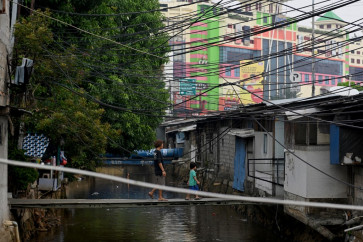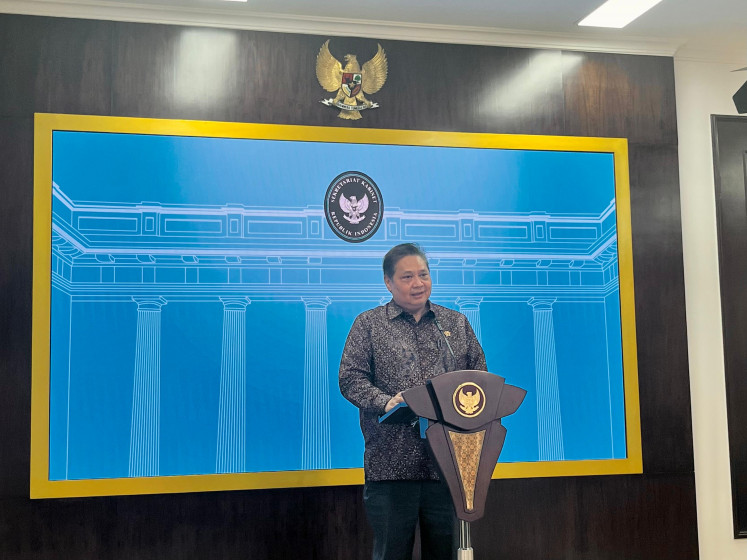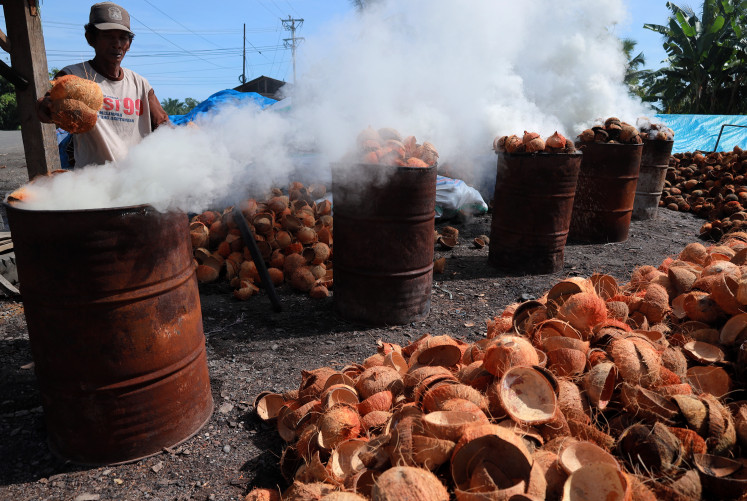Experts renew calls for govt to ban use of lead paint
As the Global Alliance to Eliminate Lead Paint marked the 9th annual International Lead Poisoning Prevention Week at the end of October, Indonesia saw renewed public calls to ban lead paint through legal instruments.
Change text size
Gift Premium Articles
to Anyone

E
xperts and activists have renewed their calls for the government to ban the use of lead-based paints, which can pose a health hazard, particularly for children.
Cofounder Yuyun Ismawati of the Nexus3 Foundation, which focuses on environmental health, said that the harmful effects of lead for human health had been discovered millennia before the global phaseout of lead and lead-based products.
Unlike other countries that have banned lead paint, Indonesia still allows the general use of the product and the regulatory instruments it has to limit the lead content in paint are mostly voluntary.
In 2015, Nexus3 studied 121 paint products from 63 brands and found that 83 percent contained more than 90 parts per million (ppm) of lead.
The study also surveyed 119 units of playground equipment in 32 parks in Jakarta and found that 69 percent used materials containing over 90 ppm of lead, in excess of SNI ISO 8124-3:2010 that sets the maximum safe level of lead in toys at 90 ppm.
Activists have been campaigning for years to discourage the use of lead paint, but Yuyun said that the government “remains neglectful of this issue”.
“We hope a comprehensive regulation will be made soon,” she added.
The Global Alliance to Eliminate Lead Paint marked this year’s International Lead Poisoning Prevention Week on Oct. 25 to 31 by calling on all countries to introduce regulations to limit or ban lead paint. The alliance is led jointly by the World Health Organization (WHO) and the United Nations Environment Program (UNEP), and involves governments, paint manufacturers as well as experts.
Data from the WHO as of May 31, 2020 shows that 75 countries, or 39 percent of the 193 WHO member states, have legally binding regulations to limit the production, import and sale of lead paints. Indonesia is listed among those countries with “no data” on their regulatory status for lead paint.
In addition to the two SNIs, other provisions exist that discourage the use of lead-based paints in Indonesia, but these are scattered across several regulations. One such provision is the 2018 Health Ministry regulation on work safety in health facilities, which bans the use of materials containing lead in the construction of healthcare facilities.
Another instrument that discourages lead paint is the 2018 Industrial Ministry Regulation on toys, which mandates all toy products to adhere to the relevant SNI on safe lead concentration levels.
“However, these regulations are still based on the SNIs and are not yet an outright ban on lead paint. It [lead] is regulated separately for different products,” said Fajri Fadillah, a researcher at the Indonesian Center for Environmental Law (ICEL).
“To control the use of lead paint, I think we should start with the basics: revising the existing regulation on toxic materials to classify lead as B3 [hazardous and toxic material] and limit its use in certain circumstances,” he added.
Fajri said the government should introduce controls on lead paint in the 2009 Law on environmental protection, which contained no provisions that regulate lead, and that it should also revise the 2001 Government Regulation on B3 materials.
The regulation categorizes lead as B3 but still allows its use in various applications. This, according to Fajri, does not fit the modern understanding of the potential health hazards connected to lead.
Pediatrician Tubagus Rachmat Sentika said that lead entered the human body mainly from the digestive and respiratory tracts. If lead entered the bloodstream, it could damage the red blood cells and oxidize the minerals the body needed to stay healthy.
“If lead enters the brain and the nervous systems, it can affect child growth. For instance, they may experience delays in motor development,” said Tubagus.
He added that some visible symptoms of lead poisoning were difficulty concentrating, anxiety, aggressive behavior and developmental delay. At high levels of exposure, lead poisoning could even cause a coma. Medical intervention was necessary if at least 45 ppm of lead was found in the blood, he said.
According to the WHO, children who survive severe lead poisoning may be left with mental retardation and behavioral disorders.
Some local paint manufacturers still produced lead-based paints, which was cheaper than replacing lead with less toxic substances, said secretary-general Markus Winarto of the Indonesian Paint Manufacturers Association (APCI).
“Consumer demand [for cheap paint] persists amid the absence of a strict ban [on lead-based paints],” he added.
B3 waste management director Yun Insiani of the Environment and Forestry Ministry said that the government had been encouraging manufacturers to produce environmentally friendly yet affordable paints.
“They can substitute [lead] with other materials, or at least give clear information on the [composition] of their products to consumers,” she said.









